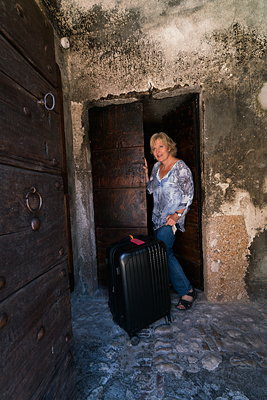
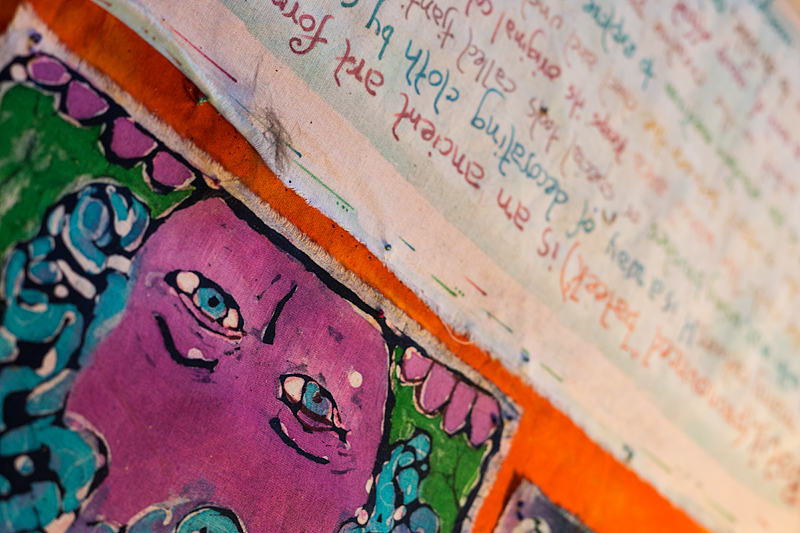
Each October, a group of “visual journalists” meet up in a selected town somewhere in Kentucky to interview, photograph/video and document the life of the residents for a week. This year the Mountain Workshop chose the state capitol, Frankfort, as the location. Seventy-one participants drew names of potential story subjects from a hat. And my assignment was resident Doris Thurber.

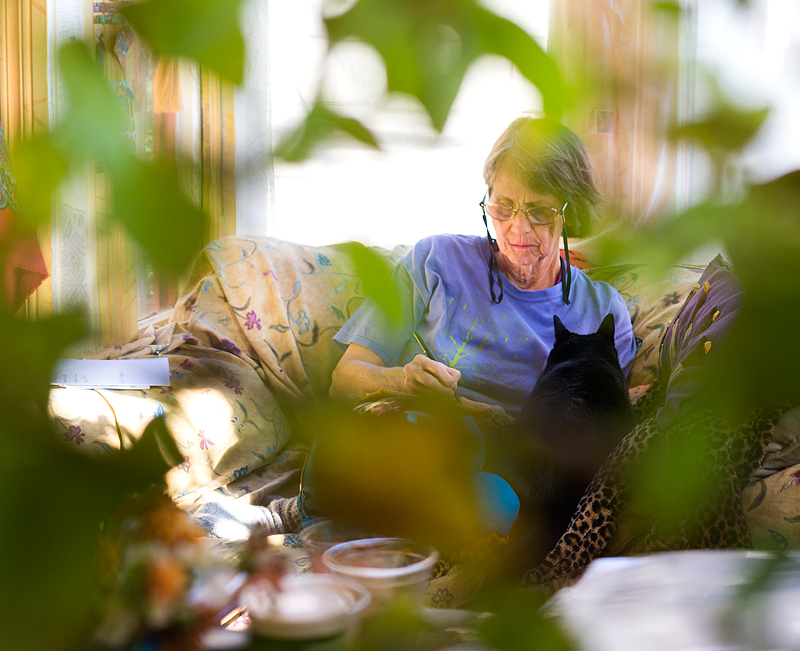
When I called her, she agree to meet with me immediately, and warmly welcomed me into her home. Doris lives alone with a beautiful cat in a historic house just a couple blocks from the capitol. She’s a talented artist known for batik. Her art work is displayed all around town, from the 16 ft panels she was commissioned to produce in the new public library to the Grand Theater stage, art studios and shops downtown.

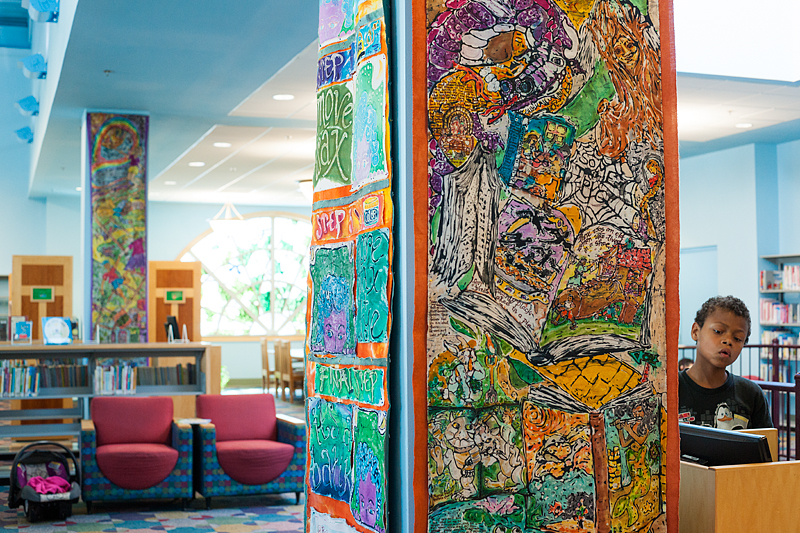
Doris has worked for the Kentucky Arts Council and is known for her active involvement in the arts community. She takes long walks daily and often stops by to chat with other artists in their studios, help them hang art or collaborate on tasks together.

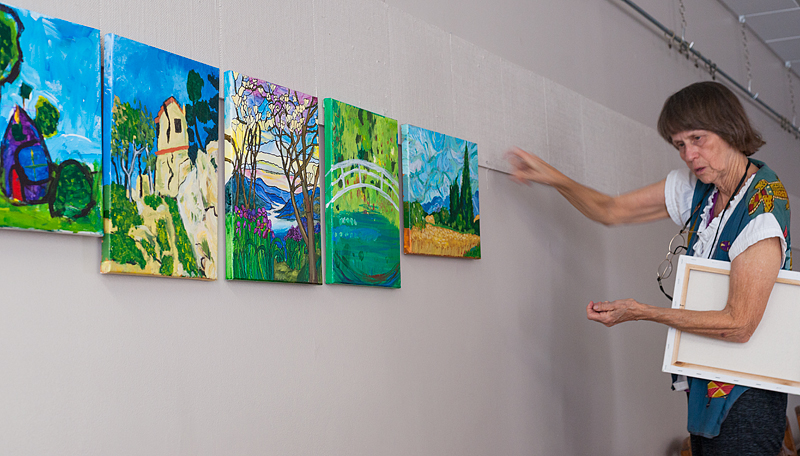
Hanging art in the Presbyterian church that was created by children through her friend’s Rembrat’s Art Academy

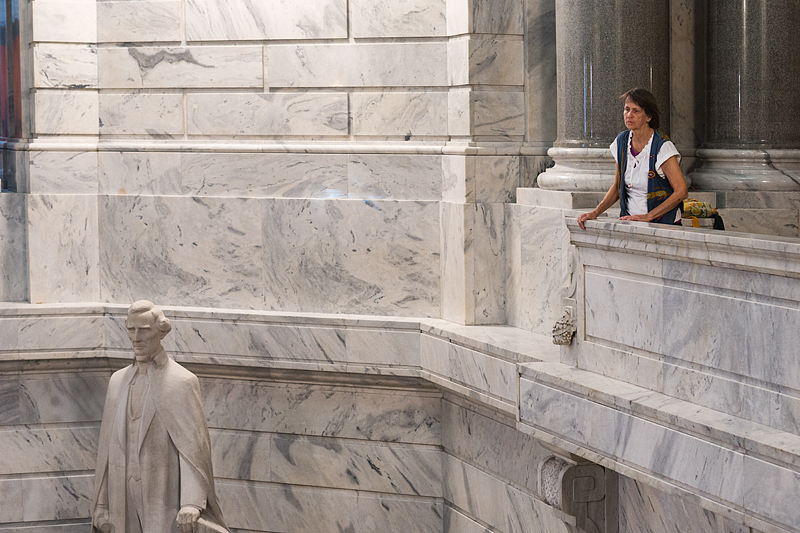
Attending the annual Kentucky Arts Council awards ceremony held in the Capitol’s Rotunda, and chatting with sculptor Melanie VanHouten

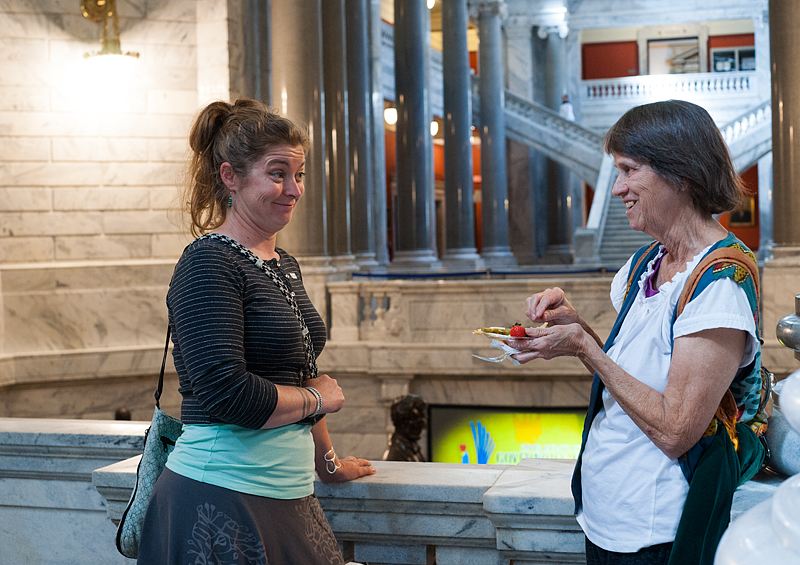
She’s also eager to collaborate on projects together and willingly shares her knowledge with others. “She’s so ready to share,” says her friend Jennifer Zingg of Full Circle Studio. “So many artists are protective of their work. But she truly believes when you give, you get.”

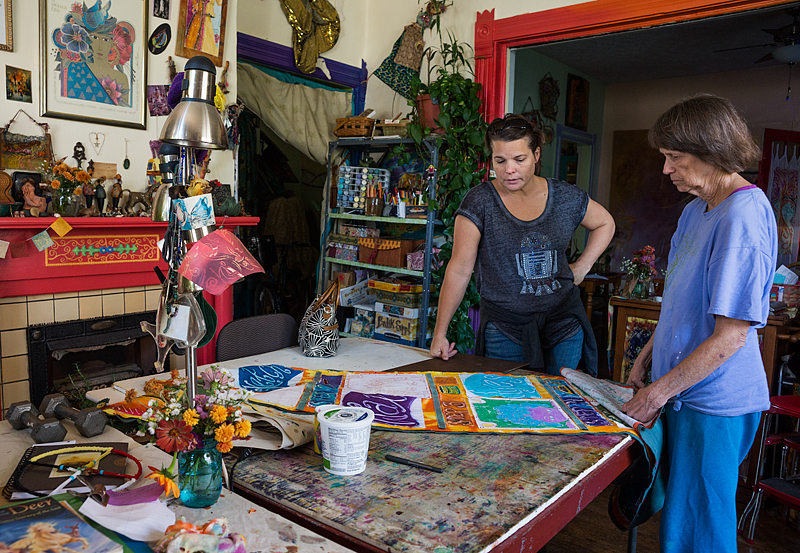 Jennifer Zingg listens to Doris discuss her ideas to repair a batik from the library
Jennifer Zingg listens to Doris discuss her ideas to repair a batik from the library
Doris not only contributes to the art community, but willingly shares her talent and time with her church, spiritual circles, a safehouse and the women’s shelter where she has worked closely with residents and staff for many years. She currently chairs the housing committee at the women’s shelter and coordinates the renovation of a home that will become a new family shelter that will welcome male family members.

 Doris volunteers to paint the walls of the new family shelter
Doris volunteers to paint the walls of the new family shelter
She’s also taken troubled teens under her wing and into her home to provide safe shelter and loving support, and housed female Mexican students chosen for leadership training through the SEED program at the local university.

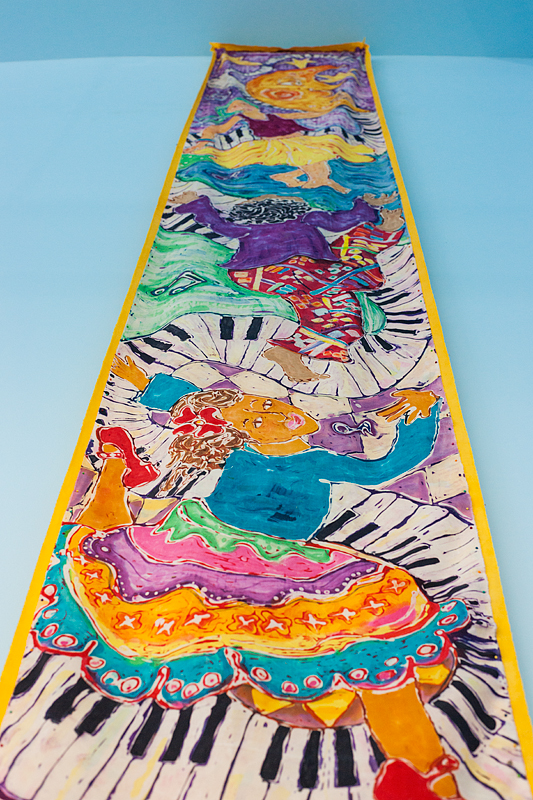
Her friend, Jennifer Zingg, says Doris pursued art when she was older after much soul searching, and uses it as a social tool to help those in need. “Art to her is therapy. She uses it to help others heal,” says Jennifer. “I’ve seen the changes it’s made in others, and see how healing it’s been in her own life.”
A decade ago when Doris and her young daughter moved to Frankfort, she used art to bond and unite the four troubled teens that moved in with them when she too was hurting and healing from recent divorce. Today her home remains a protective cocoon filled with love surrounded by the unique expression of art she and the girls created, from painted woodwork, ceilings and angels to batiks that decorate the cozy space.


“She’s a calming face to wake up to,” Doris says of the batik she made in her bedroom.

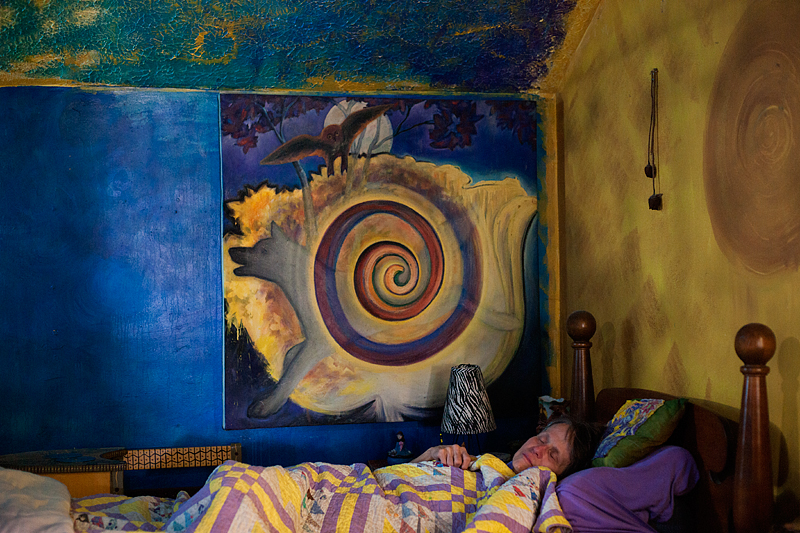
Batik panels hang as curtains and doorways. And artwork created by friends including stained glass and paintings adorn the walls. Even quotes of inspiration and affirmation are written on the walls surrounding a sun-filled little niche where she reads and writes in her dream journal.

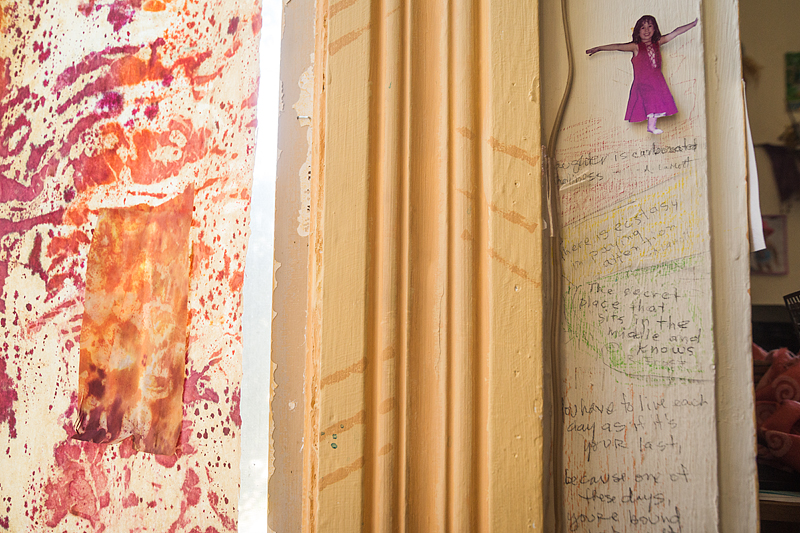
A large table sits in the middle of the living room covered in dabs of paint. This is Doris’ work space for creating her art. Although she has an art degree from KSU, her primary art form, batik, was self taught. She became intrigued by this ancient art form, which involves dripping wax on painted fabric, when her sister Wanda returned from Thailand with a batik tool as a souvenir. Doris researched the process from library books and began experimenting with a huge piece of fabric while waiting for her adopted baby daughter to come home.

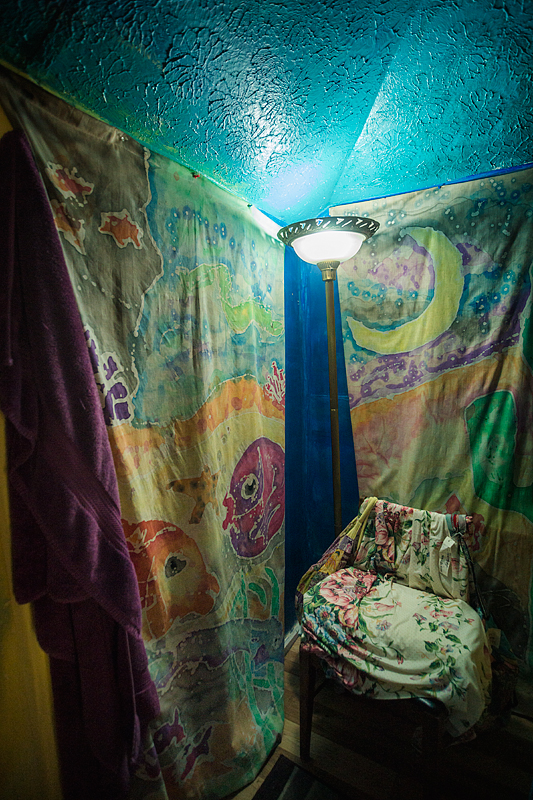 Her first batik panels now hang at the foot of her bed
Her first batik panels now hang at the foot of her bed
Doris has became prolific creating batik over the last 23 years. Each piece is different, inspired by ideas or pictures she keeps in a binder. “I’m intrigued by color, and the looseness of it,” Doris says. “It’s not an exact science and takes on a life of its own, becoming more complex.” She uses a lot of symbolism, and frequently illustrates how women are connected to earth and to each other.

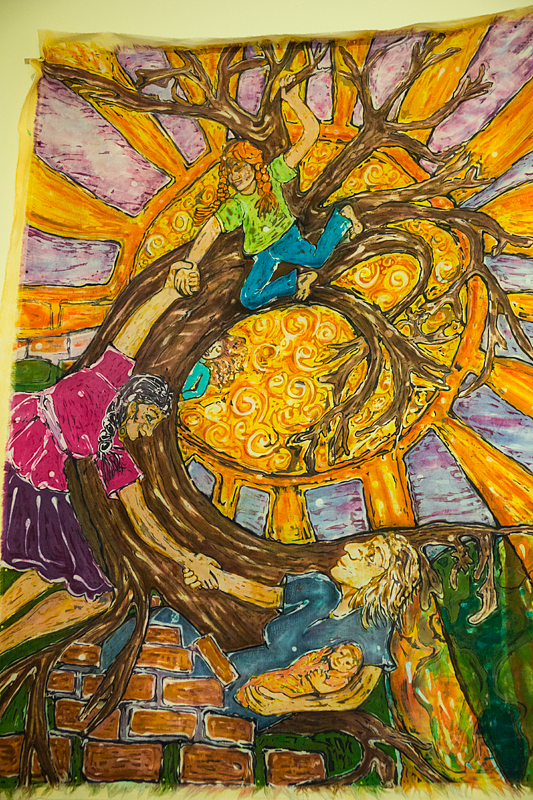
A batik at the women’s shelter shows three women woven in a tree touching hands. The director of the shelter, Josie Kirker, says that “Doris believes that this interconnection is so important. It takes a village to raise a child, and a vision to make a shelter work.” Josie pointed out the fabric dolls with branches for arms on the wall as an example of her recent collaboration with the ladies at the shelter. Doris used grant money awarded to her from Kentucky Foundation of Women to teach women to deal with abuse and domestic violence by expressing their emotions through art. And taught them portable skills, empowering them to heal and earn money on their own.

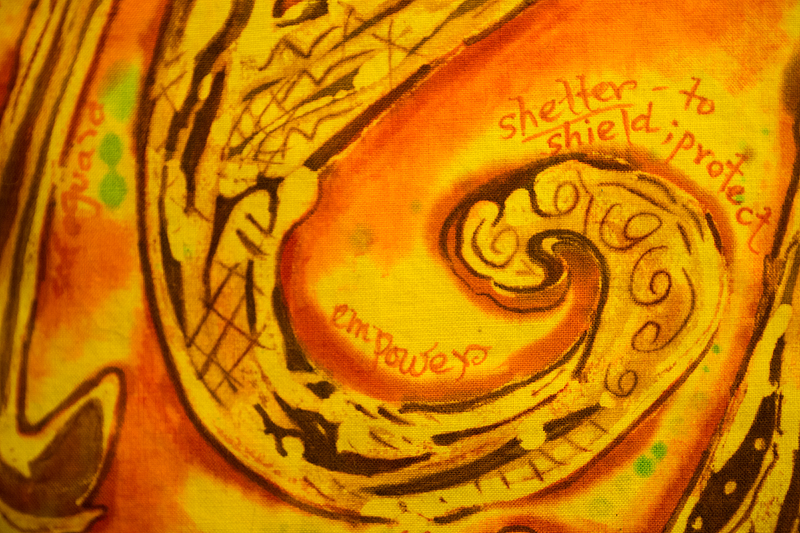
Her passion for creating batiks abruptly stopped this past February when her 22 year old daughter, Maya, suddenly died. Doris spent the winter holed up at home, seeking solace in art. But not batik. “Batik was birthed when Maya was,” Doris says. “I hung my first piece around her bassinet waiting for her to come home.”
Instead, she began sorting through images and creating collages of layered images associated with her daughter’s memory. “Art connected me with her,” Doris says. “I didn’t understand why I was doing collages until my friend said, ‘Your life got blown up. Collage makes perfect sense. You’re trying to put the pieces back together.”

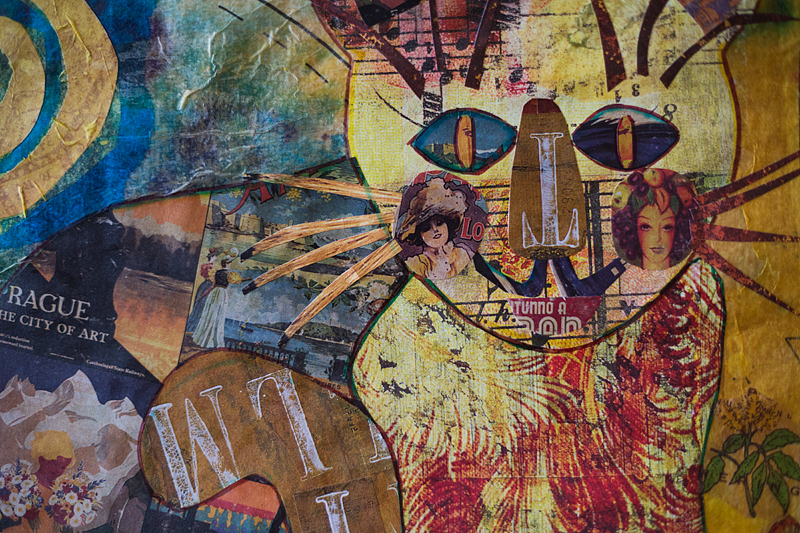

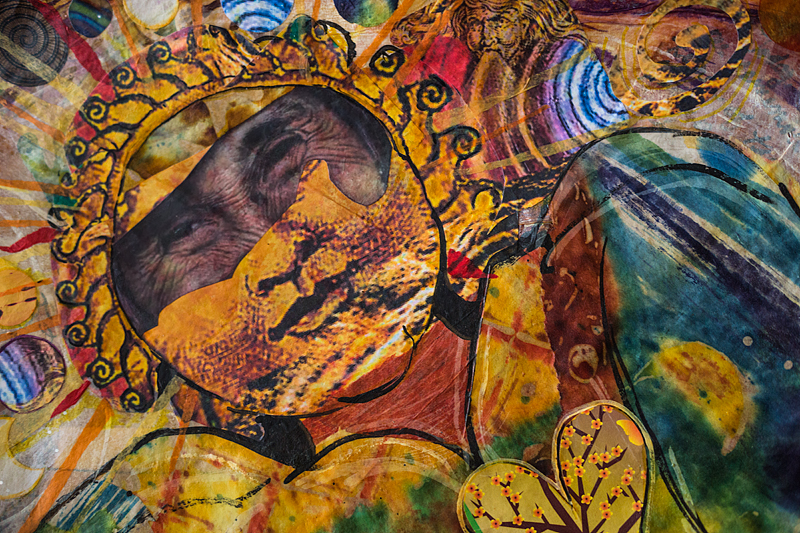
Now, eight months later, Doris is still creating collages. She currently has an exhibit at the Vibrant Life shop in downtown Frankfort. It is a tribute to her daughter Maya.

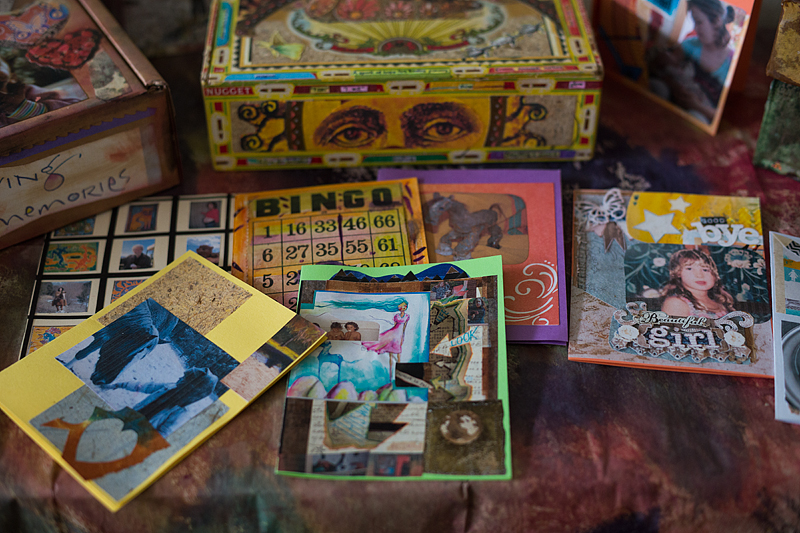
But among the collages on the walls, and the memory boxes decorated with layered pictures, is Doris’ first batik attempted since the tragedy.

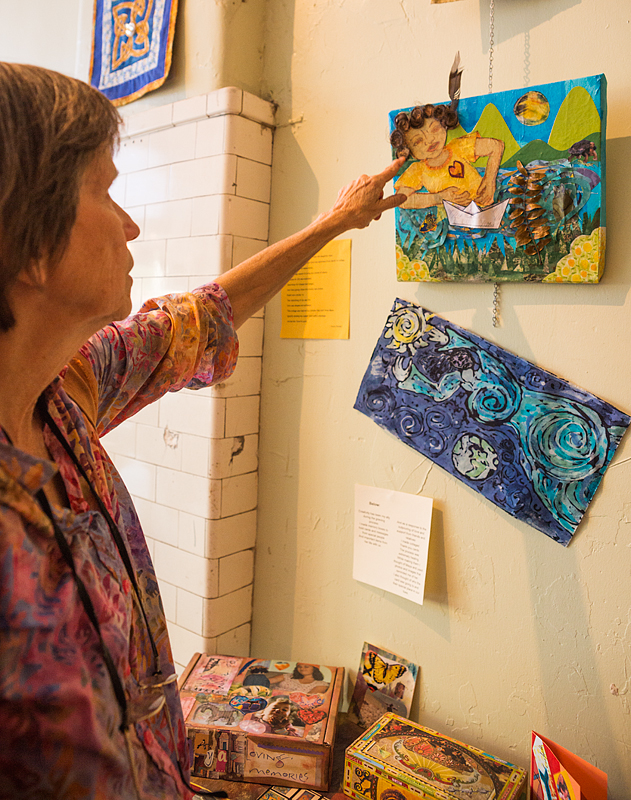
“I was getting a little scared it wouldn’t come back,” Doris said quietly about her passion and compelling desire to create batik, her primary art form. “I guess something in me was protecting me from the grief I was feeling,” Doris says. “But I’m getting excited about it again.” The blue colored batik appears to be symbolic. The image is a female. Flying.



